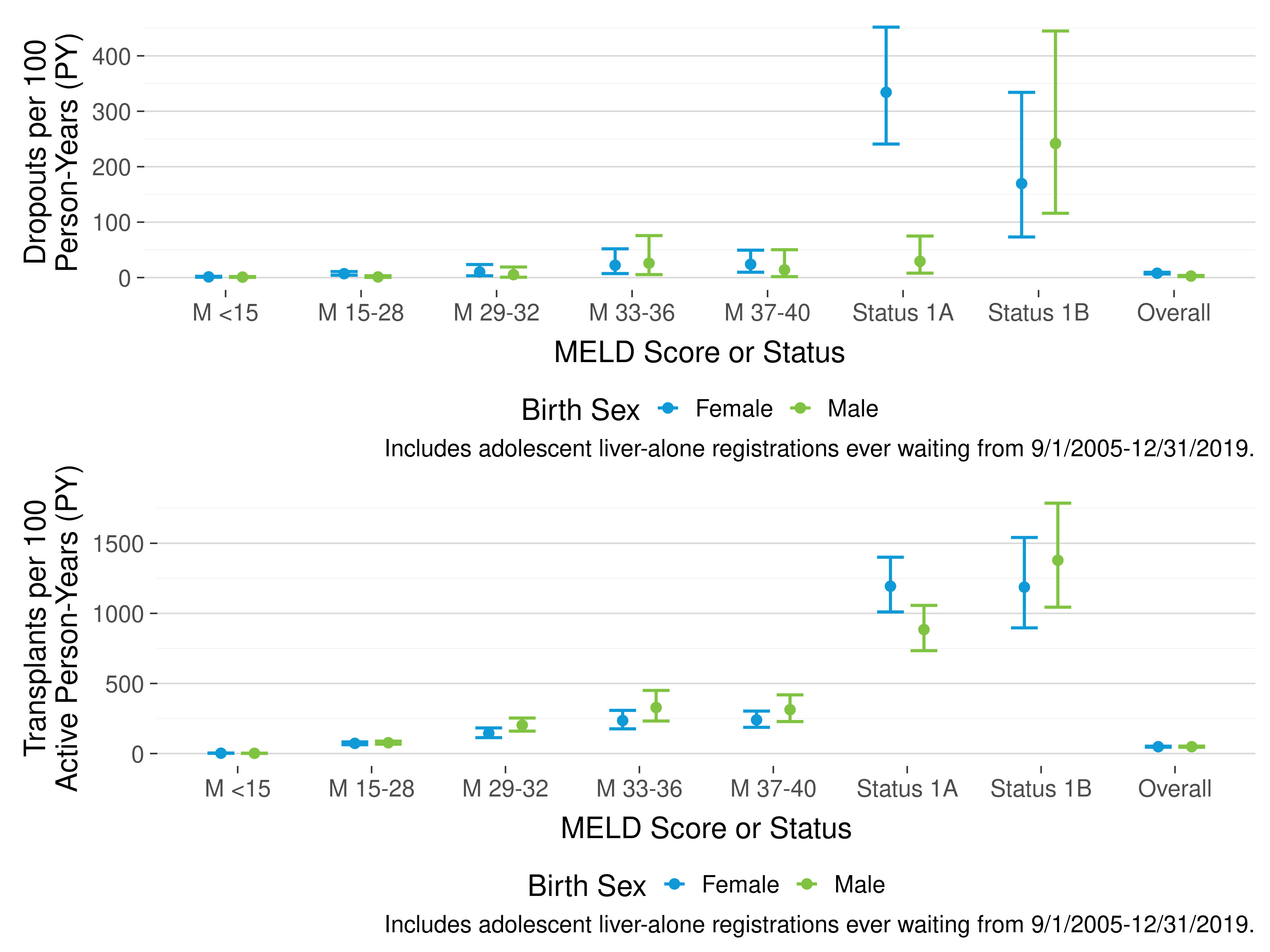Why is Adolescent Waitlist Mortality Higher for Status 1A Girls?
1Research, United Network for Organ Sharing, Richmond, VA, 2Seattle Children's Hospital, Seattle, WA, 3United Network for Organ Sharing, Richmond, VA, 4Policy and Community Relations, United Network for Organ Sharing, Richmond, VA, 5University of Colorado, Aurora, CO, 6University of Washington, Seattle, WA, 7UCSF, San Francisco, CA
Meeting: 2022 American Transplant Congress
Abstract number: 1446
Keywords: Liver, Pediatric, Waiting lists
Topic: Clinical Science » Liver » 61 - Liver: Pediatrics
Session Information
Session Time: 7:00pm-8:00pm
 Presentation Time: 7:00pm-8:00pm
Presentation Time: 7:00pm-8:00pm
Location: Hynes Halls C & D
*Purpose: Although adolescent pediatric liver transplant candidates are a vulnerable population, they are often excluded from analyses due to small sample size and assignment of a Model for End-Stage Liver Disease (MELD) score instead of a Pediatric End-Stage Liver Disease (PELD) score like younger children. Given the importance of monitoring the transplant system for disparities within various subpopulations, we explored reasons for differences in waitlist mortality between Status 1A adolescent boys and girls.
*Methods: OPTN data was analyzed for adolescent (ages 12-17 years at listing) liver transplant candidates from 9/1/2005-12/31/2019.
*Results: There were no statistically significant differences in unadjusted waitlist removal rates for death or too sick (dropout) between male and female adolescents with a MELD score or Status 1B (Figure 1). However, the Status 1A dropout rate was more than ten times higher for female adolescents than male adolescents. Transplant rates were not significantly different between these groups (Figure 1). Females accounted for a larger number and proportion of Status 1A adolescent waitlist additions than male (n=247, 64% vs. n=136, 36%). Females were more likely to be removed for death or too sick (n=41, 17%) than males (n=5, 4%). Although proportions were similar, a larger number of female adolescents were listed as Status 1A for acute hepatic necrosis (n=153, 31%) than males (n=82, 30%). The cause of acute hepatic necrosis was more frequently drug related in females (n=58, 38%) compared to males (n=8, 10%). Distributions of race/ethnicity, height, and weight were similar between groups.
*Conclusions: Among adolescent liver transplant candidates, dropout rates are higher for Status 1A females than males, likely due to a larger volume of girls listed with drug related acute hepatic necrosis. This will be an important trend to monitor as liver allocation policies evolve.
To cite this abstract in AMA style:
Foutz J, Hsu E, Noreen S, Cafarella M, Pomposelli J, Biggins S, Reyes J, Perito E. Why is Adolescent Waitlist Mortality Higher for Status 1A Girls? [abstract]. Am J Transplant. 2022; 22 (suppl 3). https://atcmeetingabstracts.com/abstract/why-is-adolescent-waitlist-mortality-higher-for-status-1a-girls/. Accessed January 5, 2026.« Back to 2022 American Transplant Congress

